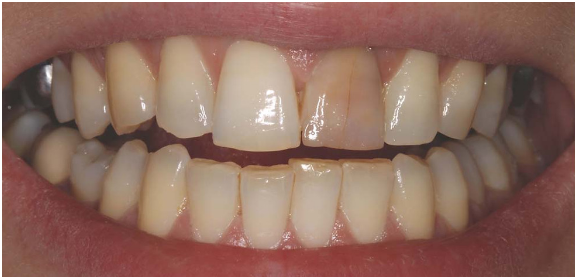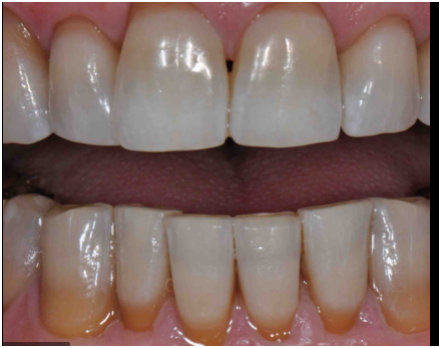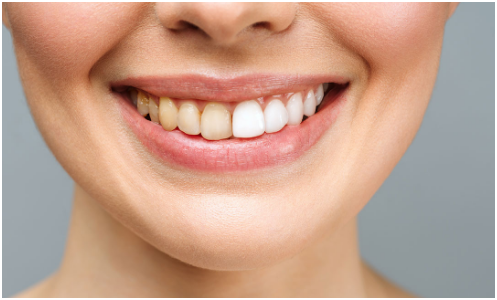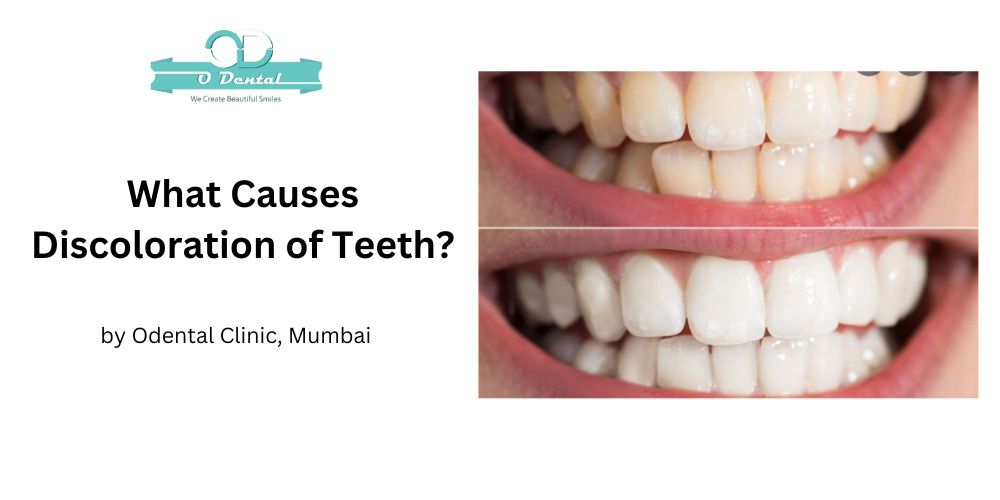Discoloration of the Teeth
Perhaps you observed that your teeth are not quite as white as they once were, or as white as you’d want them to be? There seem to be a variety of factors that might cause your teeth to lose their luster. However, there are numerous methods for removing teeth staining and preventing them from forming in the very first place. These are a few other suggestions for maintaining a healthful and attractive smile.

What Causes Teeth to Discolor or Darken?
A white, bright smile is already on almost everyone’s wish list. Your teeth might discolor for a variety of causes. Some factors are beyond our hands, such as aging or childhood accidents which may disrupt the formation of our teeth enamel.
That would be why you should talk to your dentist about any intentions you have for teeth brightening. He or she might be ready to discern whether your tooth darkening is just the result of lifestyle modifications, like consuming quite so much coffee, or if it seems more like an oral health issue.
Whereas teeth whitening is typically performed for cosmetic purposes, your dentist might advise you on the best treatment alternatives for the discoloration you have. The good news would be that correcting dental discoloration is frequently possible. It’s for this reason that maintaining a white, bright smile is worthwhile. Odental is a reliable cosmetic dentist in Mumbai who wishes to provide the best treatments in the interest of the patients.

Unhealthy habits leave blemishes on the teeth
- Foods and beverages: Caffeine, tea, carbonated beverages, wines, and even certain starchy foods like pasta as well as potatoes could cause stains.
- Tobacco usage: Tobacco usage, whether smoking or chewing, might discolor teeth.
Tooth discoloration as a result of poor dental hygiene
- Poor oral hygiene: Not brushing and flossing your teeth can lead to plaques and foodstuff stains. Due to this, food gets caught in the teeth. Putting off expert dental cleanings might lead to the formation of discoloration.
- Disease: Illnesses that inhibit the normal growth and formation of tooth enamel (the white outer layer of your teeth) plus dentin (the permeable “yellower” substance beneath the enamel) can cause discoloration. Teeth discoloration can be caused by medical procedures like head as well as neck chemotherapy or radiation therapy. Certain illnesses in pregnant women can harm your baby’s enamel growth and darken its teeth.
- Medications: It has historically been recognized that certain prescription drugs can darken teeth in children who are still growing. Tetracycline plus doxycycline medicines can damage enamel development in kids below the age of eight. Teeth can be stained by mouth rinses with washes comprising chlorhexidine as well as cetylpyridinium chloride. Teeth discoloration could also be caused by antihistamines (such as Benadryl®), antipsychotic medicines, and hypertension drugs.
- Dental supplies: Certain amalgam replacements, particularly those containing silver sulfide, might provide your teeth with a gray-black tint.
- Aging: Once you get older, your teeth’s outermost part of enamel wears away, revealing the yellow underlying beneath. As you become older, your teeth dentin expands, reducing the thickness of the pulp. The tooth’s permeability decreases, making it appear darkened.
- Genetics: Certain families have thicker, whiter enamel.
- Environment: Far too much fluoride might induce fluorosis, which appears as white patches on teeth if it comes from ecological factors (high fluoride concentrations in water) or even from heavy use (fluoride treatments, mouthwashes, toothpaste).
- Trauma: Children can be hit inside the mouth while sports. When they are under the age of eight, the injury may interfere with the production of enamel. Trauma can indeed discolor adult teeth whenever blood flow towards the tooth is reduced or the cord dies due to a sports accident and perhaps another impact.

How prevalent are stained or discolored teeth?
Although no one recognizes for sure how numerous of us have discolored teeth, it is indeed apparent that our dental hygiene and whiteness are important to us. Brightening treatments and procedures are very trendy at the moment because we perceive a bright smile as a status in society signal. As per the American Academy of Cosmetic Dentistry, the majority of us (99 percent) regard our grin to be our most essential social attribute.
A quick stroll down the dental hygiene aisle of any pharmacy displays a diverse selection of bleaching trays, patches, toothpaste, plus mouthwashes. We are now, greater than ever, placing our money wherein our mouths are, investing more on over-the-counter as well as specialized whitening treatments and techniques each year. If you’re willing to brighten your teeth, there are solutions for every budget — but it is important to understand which ones are secure and effective — as well as which ones could cause more damage than good.

TREATMENT AND MANAGEMENT
What teeth-whitening treatments are available?
Effective treatments differ, and not everybody is a suitable candidate for every type of whitening procedure. The kind of discoloration on your teeth will decide how several shades whiter they will become. Take into account that bleaching products are not approved by the US Food & Drug Administration (FDA), and that is why you should always see your doctor before using one.
Is it possible to brighten dental implants or crowns and veneers?
Bonding, veneer, caps, bridging, dentures, as well as dental implants, are examples of restorative dentistry that cannot be lightened since they are constructed of manufactured materials, mainly porcelain. Just genuine enamel teeth could be whitened, but only if the reason is reversible, as determined by your dentist.
- Highly qualified whitening is done in the workplace by a doctor who employs professional lightening materials and techniques to accelerate the whitening procedure. A hydrogen peroxide mixture will be applied by your dentist. To speed up the whitening process, several items may demand heat and particular light. Other professionally available goods would have a stronger whitener percentage, sometimes even with desensitizer, as well as a bespoke tray for improved whitener stickiness.
- Dental bonding is indeed a treatment in which your doctor puts white cement to your teeth and solidifies them using a specific healing light.
- Dental caps are used to preserve, repair, and substitute damaged teeth while also improving the color and shape of your grin. Your dentist could coordinate the color of a crown to the color of your remaining teeth.
Conclusion
Thus Dental veneers are porcelain ‘shells’ that are custom-made to protect the face of your teeth and enhance their color and shape. They’re small and slender, about the diameter of a fake fingernail. Whether you opt for veneers, your doctor will advise you to prevent biting onto tough foods with your primary teeth to avoid breaking.

